#make characters learn the same lessons but from a different angle
Explore tagged Tumblr posts
Text
aus where the core message stays true to canon but it's written in a very funky font you are so dear to me
#we're not reimagining ANYTHING it's just canon with glitter on top#how many times can you tell the same story in different settings and how the setting affects the story you wanna tell#how many creative ways can you come up with to incorporate canon events into your au etc#shipping characters gives you coffee shop aus taking main messages from canon makes you create a coffee shop au with a PURPOSE#shove that character arc into weeks of fucked up frappuccino orders come up with whatever counts as murder metaphors in a coffeeshop settin#make characters learn the same lessons but from a different angle#or maybe the angle stays the same maybe it's only centuries that change#fanfiction
5 notes
·
View notes
Note
Cedric for ask game- 1, 12, 14, 25
1. Why do you like this character? Okay. So, ever since I watched Avatar: The Last Airbender, I have been a sucker for a well written redemption arc. However, if I were to get into specifics, I think there's a lot to explore in this character from a literary perspective. He's complicated. Very complicated. His motivations make a lot of sense even if he goes about things in ways that aren't objectively moral. Which, honestly? That is stuff you don't see in children's TV much since Gargoyles or other things from the 90s and early 2000s. He has the backstory and personality of a Shakespearean tragic hero. He reminds me of like if you shoved Macbeth and Hamlet in a blender in the best way possible, and then, somehow, came out with Macduff? IDK how that works, but that's what happened. Secondly, I find him relatable to my literal life. Zuko hit me when I was just a little younger than Zuko's age. I saw Sofia the First, for the first time in earnest, as I approach 30. I am, exactly, the right age to relate to Cedric's personal issues. So, I like him because a lot of the stuff he deals with is the stuff I'm processing in my own life. Aging parents. Trying to repair a difficult relationship with my own dad as we both grow older. Realizing I might not be able to fix everything that's missing there, and trying to walk the line between indifference and cynicism. Check. Trying to form a solid relationship with a/my child and teach them things. (Granted my squish is biological, but still. Check.) Trying to look past my own personal failings to create a better world for my kid and future generations. Check. Trying to look past what people say/ have said about me and others like me to see the intrinsic good in myself despite my nuanced set of identities. Check. Realizing that my kid just existing in my life is what gives me hope to see myself as great. And, maybe, just maybe, that's a lesson I can teach my kid without them having to go through all the crap I've gone through to learn it: we are great because, unmasked, in our fullness, together with others, we are greater than in isolation. So, I like him because it's easy to walk his journey and see some elements of my own life and where I'm at personally. And, you know what? The show does a nice job presenting this struggle. I feel less alone in my own crap when I watch it. I've got a buddy to walk in my adult problems with while my kiddo gets a princess to learn how to be a good person alongside. I LOVE that. It's truly something we both get something out of, which, is, like, SO supremely rare. As a parent, I just cannot express how much I care about that. Bluey might be the only other program I can think of that does "both" as well as Sofia does. Like, I don't know if there are any other fans in this fandom who are parents. But, man ... Cedric hits because *all* of the life stuff he's dealing with is stuff that, like, is so real. Especially the stuff with his parents. Oof. I don't know if any of y'all have had parents age. But, it's a different beast y'all. It makes you think about things, it makes you want to retreat, and it makes you want to fix things - all at the same time. Sorry if that's a lot. But, when we talk about Cedric being an adult, this is what we mean. So, I just kind of fell in love with Cedric's character because in so many ways his story just kept slapping for me from every angle.
#pip does life#pip answers things#pip answers questions#cedric the sorcerer#cedric the sensational#cedric the great#sofia the first#sofia the fandom
21 notes
·
View notes
Note
Ever get peeved by Aesop Amnesia? That thing where a character does something that contradicts a lesson they learned?
It doesn't drive me crazy, but it does bother me. To give an example, Anne's behaviour in "Anne of the Year". Anne's declared "Frog of the Year", and Toadstool takes offence to the decision, insulting Anne and saying she doesn't deserve the title. Offended, Anne goes overboard planning the accompanying celebration to prove she does deserve it.
First off, Anne being so insulted by Toadstool's words and this determined to prove him wrong contradicts what she learned in "Wally and Anne" about not caring what others think of her.
Secondly, during her planning for the party, she insists on Sprig asking Ivy out, contradicting another lesson she learned in "Dating Season" about how you can't force people to hook up.
Some argue "hey, we're only human, we always make mistakes". But when a character makes a mistake and claims to learn from it, I'd personally prefer it if they don't make the mistake again. Y'know, to prove they've actually learned.
This kind of thing bother you, too?
Oh look, it's part of what made me eventually drop My Little Pony: Friendship is Magic! Neat to find out the term for this.
It's complicated and Amphibia is a good showcase for how this can be complicated. After all, learning a lesson and being able to apply it are two different things and the whole point of Anne of the Year is actually a statement about being human but striving to be better. That is why she is the Frog of the Year... But also why she fails old lessons in it. She gets swept up in the title, responsibility and pageantry and in the process loses sight of what is important. It's actually trying to invoke past mistakes for the purpose of detailing how we can slide back and disappoint others but not actually becoming worse people in the process. Does that make it the most satisfying watch in the world? No but at least it's doing something with it. It is genuinely trying to have a different point.
I am fine if something wants to tackle a character's issues from multiple angles. I think the difference between Hop Pop wanting Sprig to become a fiddle star and him wanting to be a star student are actually pretty neat in concept. Both are that you shouldn't pressure someone to do something they don't want to but one is following a passion too far while the other is conforming to what society tells you is what a good future looks like. It's a similar flavor of episode that can feel like it's a repeat but there's genuinely something to be done with it. Even here, there's a difference between not caring if people see the world the same as you, as being okay with being at peace if only you believe in the strange and wondrous, and being given a title that is incredibly meaningful for SO MANY REASONS and then having someone question you. Those are two different motivations and essentially instills self doubt/imposter syndrome into Anne. She didn't understand why she was picked after all and by her actions potentially didn't believe it unless she made things perfect but only by the flawed definitions of perfect that she knew (which actually tees up Reunion as the next episode well).
HOWEVER
Amphibia does an example of this that deservedly gets skewered and highlights the reasons why this trope is so awful: Hollywood Hop Pop. I actually have a MUCH fonder spot for S3 than seemingly most of the fandom with this being my one exception. This deserves its reputation. It is a repeat concept from before with a lesson that is extremely similar to before, with little difference in commentary between the two, only in setting, that commits the worst thing this sort of thing can do: This character wouldn't do it anymore. Not just that they should have learned their lesson but demonstrably, their core character traits mean that much of what might push them to do this just doesn't exist. Yes, Hop Pop can be selfish and think about himself but his paranoia and concerns, especially reinforced the last time he tried this, makes him the WORST option for someone to potentially blow their cover in the human realm like this. At least Sprig wore a disguise.
It commits what is genuinely the ultimate sin of any moral driven thing like Amphibia but especially in terms of this trope: The concept came first. Very clearly, they wanted to do a Hollywood episode because they were in LA and Hop Pop was the closest to a character who would fit for the concept, despite it no longer being in character that he would do this. That is just bad because there's no way to buy in that they would need to revisit this, not in this situation.
But that is the trick with this. Sometimes, a shift in context or focus truly can make you go "Yeah, this character flaw would come back because of this." This is especially true if it's just a lesson learned instead of, you know, a big deal moment for a character where they literally promise to their partner to stop doing the thing and then just keep doing it like nothing happened, especially to the person they promised to stop doing the thing to. eye twitch But yes, we are human. Sometimes we do need something hammered home a few times to make it stick, especially if something tempts us towards our bad habits again. I mean, even in S3 of Amphibia, Anne is still going WAY too far for the people she cares about to prove herself as a good friend because the damage Sasha did to her runs that deep and just because you learned to cut out a bad friend, what about a friend that's better, or a friend you feel you've wronged? Those are similar questions but they're enticing questions (Sprig's Birthday and Give a Frog a Cookie respectively btw).
It's complicated but I don't think Amphibia falls prey to this. Not enough to become a real problem at least. See you next tale.
======+++++======
Seriously though, if you make a character promise to stop behavior then if they don't, you better be willing to doll out the consequences for repeating it because at that point, it's not just relapsing, it's breaking their word and trust others put in them. THAT is when this trope is at its worst in my opinion.
I have a public Discord for any and all who want to join!
I also have an Amazon page for all of my original works in various forms of character focused romances from cute, teenage romance to erotica series of my past. I have an Ao3 for my fanfiction projects as well if that catches your fancy instead. If you want to hang out with me, I stream from time to time and love to chat with chat.
And a Kofi if you like what I do and want to help out with the fact that disability doesn’t pay much.
9 notes
·
View notes
Note
i wanna get better at art but dont know how to start ^^' whats a good way to get into studying anatomy and improving as an artist? tysm 💗 love your art soso much
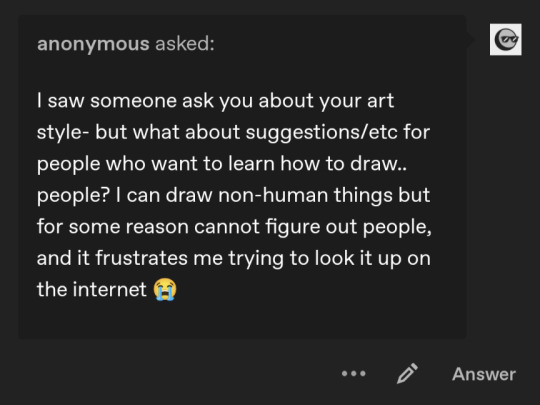
more art converts 😼 yay!!
i think these asks were sent by different people but they're pretty related + a lot of my advice is the same! so i'll answer these together under the cut (it's so long oh gosh)
ok first of all i'm very flattered that people are asking me for art advice but i'm really not the most equipped person to ask TTOTT I've never been deliberately studious with my art so I feel bad offering advice when I've mostly gotten by with just drawing fanart and ocs a lot... my rate of improvement has therefore been slow, but I've still had an enjoyable learning experience so perhaps from that angle my input may help! i'll mainly refer you to external resources that have helped me
For anatomy + drawing humans:
1) I know I'm not diligent enough to sit down and study muscles, so instead I make it more enjoyable by drawing my favorite characters in a pose that targets the muscles I want to practice! (i default to drawing ppl naked because of this lol) This isn't the most efficient, but it serves as good motivation to get practice in. (honestly a lot of my general art advice has the undercurrent of becoming so obsessed with characters to drive your motivation to draw even when artblocked/ struggling with doubts!)
2) I want to refer you to Sinix's Anatomy playlist! Although Sinix focuses more on digital painting, he gives simplified anatomy breakdowns that include how muscles change shape under different movements/poses, which is crucial for natural human posing. the static anatomy diagrams from Google don't really help for that
3) What's just as important as anatomy is gestures! (especially important if you're used to drawing non-human objects I think!) Making figures look like they have flow to them will sell the "naturalness"(?) to your anatomy. If you have in person life drawing sessions accessible near you I'd recommend trying those out, or if you prefer trying it digitally there's this website!
This helps you not only get a sense of human proportions, but also natural posing! I'd limit the time taken to draw the poses from like 10 seconds to 1 minute(?) for quick gestures, and maybe 1 minute to 5mins(for now!! typically they go much longer) to study human proportions. I'd say don't spend a lot of time on them, repetition is more important!
4) I've also picked up on useful anatomy tidbits from artists online! Looking at how practiced/ professional artists stylize a body helps me focus on what the essential details are to convey a particular form (looking up "human muscles" and being hit with anatomy diagrams full of all the smallest details can be overwhelming! what do you even focus on?! so these educated simplifications really help me) Like Emilio Dekure's work! Look how simplified these figures are, and yet contain all the essential information to convey the sense of accurate form (even though it's highly exaggerated!)
(shamefully admits I've never studied from actual anatomy books so I can't recommend anything in that sense TTOTT)
For general improvement:
1) I highly recommend Sinix's Design Theory playlist and Paintover Pals! (+ his channel in general) You don't have to put them immediately into practice, but I think these are good fundamental lessons to just listen to and have them in the back of your mind to revisit another day. Plus these videos are just fun and very approachable! Design theory fundamentals are essential to creating appeal and directing a viewer's attention, and critiquing others' work/ seeing his suggestions are a good way to practice noticing areas of improvement+ solutions yourself!
2) If you prefer a more formal teaching resource, the Drawabox YouTube course covers all the basic fundamentals of drawing in short lessons. But honestly if I were starting out, this would be a little intimidating for me (and even now it still is! I haven't done all of them) But even if you don't watch them, the titles should give you an idea of the basic concepts that are valuable to pick up. I think it would be nice to keep in mind and revisit once in a while as you learn!
(One lesson I do encourage you to watch is the line control one! A confident continuous line conveys motion and flow much better compared to discontinuous frayed lines which I think is good to practice early by drawing from the wrist and shoulder)
3) As a universal piece of advice: Please please please use references! Use a reference for literally everything, observing is how we learn! You'll find that a lot of things you thought you knew what they looked like are inaccurate by memory alone. Also, trace! This is solely for your practice, tracing then freehanding has helped me grasp proportions when I was struggling! (of course don't post these online if you traced from art)
I've found that being able to compile references into easy to access boards has been very helpful in encouraging me to use references more. For PC, I think they use PureRef (free/pay what you want), and for iPad I use VizRef. VizRef is a one time purchase (which was definitely worth the $3.99 USD price imo)
4) On that note, try building up the habit to observe from media + real life and make purposeful comments about what you see! Like hey, when I bend my knee, the muscles/fat in my thighs and calves bulge outwards, I should draw that next time. Purposeful observation carries over to your overall visual library, and it's a little thing that adds up over time
5) For motivation, get into media you really enjoy, or make your own characters! The way I started art more seriously was by drawing fanart + OCs from anime that I liked ^^ For OCs it really encourages you to draw more because you're the primary creator of their art! Also you gotta see a lot of good art to make good art! Watching visually appealing media (like animation with appealing stylization/simplification) can passively help you learn just by observation.
ok wow I could go on but this is already a lot of information TTOTT my main aim for this reply is basically: don't let anything discourage you from learning to draw!! drawing is so fun and brings me a lot of joy ^^ practicing often will of course help you improve, and the way to incentivize that is by having fun with it! i hope this could help!💞
#my asks#art resources#trying to be concise n failing#i'm mainly worried that like. my art tips make me sound more skilled than my art actually is
69 notes
·
View notes
Text
So I’ve had some Thoughts about Juni Ba’s The Boy Wonder
There are a few points I feel the need to point out before I dig into this, as I feel that I might end up sounding, for lack of a better term, fangirlie. I do genuinely love The Boy Wonder, and part of that comes from it being a comic about the Robins. So, that does give me a bit of a bias. Especially as lately, there hasn’t been a ton of good (in my opinion) Jason Todd comics, who is my personal favorite. And Juni Ba has a really good take on the character. But, outside of that, he genuinely has a good take on all the Robins and even on Talia. But again, because of my love for these all these character I’m gonna keep away from talking too much about the story and character development to focus on the art. Because Juni Ba’s writing is great, but what makes the story is how he uses his art to tell the story in a rather fun way.
The Boy Wonder is made of 5 issues, each having a different focus. Dick, Jason, Tim, Talia, and then Ra’s Al Ghul. The story still centers around Damian, but through comparing these characters to Damian. There is also a different feel between each comic, and this is done through different paneling. Dick’s issue has a lot of dynamic angled panels. There is also a moment of comparison with the young Dick, showing him being Dick and Robin in the same panel. Starting a theme of paralleling. Two pages later, you also get a young Dick catching his mom and then a current Dick catching Barbara. The paralleling between past and present will come back in the Ra’s issue, but it's particular to the start of Damian’s growth. It’s also the start of the story’s style being set to show Damian’s feelings, like how after Damian cuts the man’s head off, there is a panel with Damian’s demon mask growing.
Jason’s issue is mostly made of 3 long panels per page, building out the scenery and honestly showing Jason as a part of the world. He sticks out with the Red Hood, but he’s casually greeting others and still moves through like he belongs. The paralleling isn’t as strong in Jason’s issue, but the stylistic feeling is particularly strong. It’s used less to show difference here, but rather more similarities. Like with Jason and Damian both having horns. And while this is a little off my point, this issue has some of the best page turn moments, particularly at the end with the opened red door. Which, while it feels like a moment for Jason, it also feels like Damian’s. While Dick was a point for Damian to compare himself and grow, Jason was a point of empathy and connection.
Jason’s issue was defined with longer panels, Tim’s is smaller to show the little details. A lot of it used to show the waste of the wealthy, but it’s also used for the Wayne Enterprises gadgets. So, while not like the direct paralleling in Dick’s issues, it shows Tim’s use of wealth to help rather than the for greed and is another lesson for Damian.
Talia’s issue has the biggest shift with the style with the paneling being quite different. Starting with the tan and clean panels of her backstory, shifting to thick dark lines boarding each pane. Then the green boards of the cave before settling for the more typical for a few pages. While it’s easy to say this is a choice for building the climax of the story, it does more, and visually helps to set apart Damian’s two lives. That of the one with his mother and the League of Assassin, versus the one of his life with his father and his brothers.
The first notable thing is that Ra’s issue doesn't’ really start with Merle and Joe’s story, rather it ends with it being a good closing for the story as a whole. But the key moment is Bruce facing of Ra’s and the panel taking up 2 pages. With them being connected but broken up by the page itself. It’s really a unification for Damian, and it’s the next page where we see what he’s learned from Ra’s to stop him, unifying Ra’s and Bruce’s ideals within Damian himself. Bringing back the paralleling between past and present, in Dick’s issues, but doing it more with the style of Talia’s issue.
The Boy Wonder was one of those wonderful moments where I remember that this story wouldn't work in another medium other than a comic. While the writing is good, what makes it great is Ba’s style and knowledge of paneling to tell the story. Particularly, a story of unification, and balancing the present and past for a better future.
17 notes
·
View notes
Text
Httyd 3 ramblings
Recently rewatched the 3 movies as is my tradition apparently and will probably be rewatching the entirety of the tv series as well (for like the 4th time as of now), and I'd wondered why I didn't much engage with the fandom on tumblr before till I browsed through the httyd 3 tags lmao. People really don't like that movie, and though I can understand and agree with some criticisms (the woobification of toothless, the design of the light fury, some questionnable side characters decisions), I feel a lot of the ire comes from a reluctance to part with the story rather than engaging with it...
Perhaps I'm just nihilistic, but to me, httyd has always been about nature and animal rights as well, and the ending acknowledging that humans don't always do good things just...made sense I guess.
Confined to a small island like Berk, Hiccup's philosophy of coexistence is applicable and realizable, that almost fantastical and hopeful angle works very well. The initial curiosity, the care, the wonder of connecting with nature, it fits the story perfectly despite its other darker undertones.
Then, all the tv series and httyd2 take us into a wider world, where there are people hunting dragons for profit, and others dominating them for wars, it is not longer a story about that initial discovery and love, it is clearly taking a more different path, which is why to me it is confusing when so many people say httyd 3 is a betrayal of the message of the franchise.
Across the entire series, Hiccup deals with the reluctance of people on Berk itself, then deals with outside forces who are ignorant of what Berk has learned, then deals with outside forces who know what they're doing but still do bad things (which you could also make a case aren't fully bad; a dragon hunter would be a hero to any small village that doesn't know how to deal with them). We get seasons upon seasons of escalation, of a big bad that becomes harder and harder to convert to his side. All of it leads to httyd 2, Hiccup still has the overwhelming optimism and belief that he can change minds, hell even Viggo did in the end, this makes sense. Hiccup is so utterly kind and accepting, but that's just not viable with some people.
He has to challenge his own belief of the malleability of the world.
In httyd2, the lesson Hiccup learns is to be a good chief, to care for his people, and the same for Toothless. But Toothless' role doesn't yet get addressed in that movie; it gets addressed in the third. What does his being the alpha mean? He has to take care of the other dragons too; they both have duties and responsibilities, to their people and each other. So in httyd3, Hiccup knows Grimmel is of the type to be unchangeable, and beyond just Grimmel, there are war lords eyeing Berk's dragons for entirely different reasons, for conquering, for destruction. Berk itself has been put on the map as a prime target, and Hiccup owes to his people a safe space to live. Their moving off the map makes sense, and with the end of the movie practically wiping any opponent who knows of their new location, it is safe. But it won't stay that way. And after entire seasons and movies where bad people just endlessly spawn and take the place of the last, he makes the decision to let go, just like Toothless does. Not because he forsook his ideals, not because he doesn't care about Toothless, but because real love means being able to let go. They both love each other enough to know where the other belongs; guiding their people. A lot of people say 'then all of this was for nothing' and I can only say if the value of something hinges on its eternity nothing is going to be worth anything. Hiccup and Toothless are who they are because of each other, and Berk will forever be a bastion of love for dragons. That *is* something.
Human greed doesn't end. The ending of httyd feels appropriate because to this day, I cannot say we deserve to have dragons. Realistically, how could they continue fighting? I can't imagine it because I know anything in that vein will feel more like an empty dream. What httyd3 offers is the hope that one day we'll be worthy, not an empty platitude that things will work out just because we love, but if we are willing to work for it, then it'll mean something. I don't think httyd 3 betrays the message of the franchise at all, I think it's just willing to assume the full breadth of the responsibility that comes with protecting and loving nature.
---
All that being said, I have my own gripes with the ending still LMAO, for exemple I'd really have loved a more consistent continuity with the shows, and romance plots are just not my thing so the whole light fury business is so eh to me. Astrid and Hiccup earned their ending but I've got a lil beef with the light fury smh
Fun fact too, I once got insane enough to think I'd make a comic or write a sequel to the httyd franchise, where a reincarnation of hiccup would come to Berk after an accident, losing his leg. He'd move from the city to this very isolated and rustic island from where his parents are from, and he'd encounter tales and myths of dragons that even the locals don't all fully believe in, but still worship and adore. Then, dragons would start appearing again due to the ocean pollution destroying the Hidden World's ecosystem and forcing them out. I did not have much of a plan but I envisioned a rather dark tone due to our modern world. I'd imagine a mass hunting using modern weaponry, people opening up dragon trades or sticking them in zoos idk. It wasn't a positive idea but it is the most realistic way it'd go down. I don't have a good opinion on humanity tbh. I did research man it was crazy, I rewatched everything and I do mean everything, while actively taking notes for the worldbuilding, so any fact about dragons or cultures went straight into a google doc. Maybe I should work on it again, I miss httyd man
8 notes
·
View notes
Text
I think something that clicked for me is the whole teacher angle, as well as how the game handles giving out information. The game asks you to guide your students, and in turn is trying (in spite of the translation) to guide the player as well. That the game itself is a lesson in how to be moral, but rather than spell that out it instead wants the player to figure this out for themselves. We know from the devs interviews they deliberately designed the game and story so that the player would not find out everything in a single playthrough,
The game wants players to piece everything together by working together. Hell, in essence even understanding Houses requires the player to rely on others in defiance of Edelgard's philosophy rather than playing the game over and over again. The game doesn't want to tell us it's moral, it wants us to figure it out by thinking.
Let's look at it with the fact that the devs said they only expected players to finish 1-2 routes of the game. They expected most players to pick the Black Eagles house, either because Edelgard initially was supposed to come off like the obvious hero or because she's a cute girl. However, they said that siding with her is about having different beliefs than the rest of the game and ultimately lead to oppression because, surprise, she's the one playing the part of the villain. How does this work then?
Well, for starters her own route makes it clear that she's a very manipulative person, keeping her allies in the dark while telling them lies to make herself look good. Silver Snow backs this up in Japan, with her actually saying she was attempting to sway the player to her side. This would also explain the inconsistencies between her character arc in Safflower and the route's endings, she effectively faked character growth for PR purposes and even her supports are about her managing to bring people around to supporting her and her ideals. However, what she does in the endings is more in line with the ideals she spouts in Azure Moon during the parley. Those ideals, however, were informed by her understanding of Fodlan's history as well as her experiences with the experiments, which is contradicted by Verdant Wind giving the players and alternate account as well as outright saying Edelgard was manipulated into going to war. This is backed up by Flower, as we learn Edelgard's version of history was passed down to her from her father after Hubert had already revealed that he was an Agarthan puppet and directly contradicted Edelgard's claims about who was behind the experiments and how she should have told you this, which brings us back to her being manipulative and trying to sway the player to her side. On top of that, it shows she misunderstands Fodlan much like Claude, but Claude was able to see that his views were based on first impressions and how wrong it was to hate people without getting to know them.
Rather than saying all that, the game expects us to figure this all out ourselves. That we are supposed to fight Edelgard as the game was written around Silver Snow and it's story. It's why it frames the choices that lead to joining Edelgard, to have different beliefs that the rest of the game, as “changing the story.” Silver Snow is the natural progression of events, on the same level as Moon and Wind. It's the moral path in light of the reveal of what Edelgard has been up to.
You are a freaking teacher. You're meant to guide your students, help them become fine upstanding adults, not let them guide you.
I mean, it still leads to a frustrating game. The reveal happens and then the game pretty much puts Edelgard's real mask back on. Characters will explain things that directly contradict her, or even have legit reasons why joining her would go against their character or backstories. People learn revelations but seemingly forget about them. All because the game wants us to figure it all out ourselves. That it doesn't want to tell us what to think, but rather tell us how to think as pretentious as that sounds. And hell, that's probably the reason why the translators got things so wrong because the game was telling them X but when we were supposed to pick up Y which contradicts it and use it to figure out Z. Convoluted to say the least.
8 notes
·
View notes
Text

It’s just amazing to have a movie with such a generic title and premise and yet pull it off majestically, where even my child self back then wasn’t a fan of the trailer. This was originally going to be a whole parody of martial arts, before they decided to shift their focus more on the main character’s progression. Looking back at this movie, I’d say that it’s entirely just awesome, overshadowing the Madagascar trilogy and standing on its own two feet. The amount of character, action, comedy, world-building and complexity all from this franchise about a panda learning kung fu which could have been a terribly-forced set of movies.
Set in the Valley of Peace during ancient China, a tournament is held so one of the Furious Five students can be picked by Master Oogway to be the Dragon Warrior. However, a clumsy panda named Po crash-lands in the middle of the ceremony and is chosen instead. With a sloppy set of skills, Po is constantly given task after task by his new master, Shift, who attempts to get rid of him, but the panda is always ready to return. Meanwhile, the criminal, Tai Lung, escapes prison in order to achieve the Dragon Scroll and learn the secret to kung fu. So, it’s up to Po himself to master kung fu his own way and stop Tai Lung from retrieving the scroll.
Like I said, the trailer and marketing was handled poorly, but the movie was just spectacular by bleeding in between its comedy and character development. Its main focus was on Po and his dream of learning martial arts, only for it to blow up in his face. The main storyline focused on his character building, rather than rely on cheaper jokes or fourth-wall breaks, as it clearly had a superior structure. The twist and its build-up weren’t treated with as much focus, as even the wisest of the masters couldn’t decipher its outcome; yet, it managed to tie in with Po’s progression and his lesson on how he could shape kung fu and learn the art his own manner.
The soundtrack was divine, aced by the astounding Hans Zimmer, working with John Powell, who actually visited China’s landscapes in order to take in the culture. Who worked on the score was the China National Symphony Orchestra that used traditional instruments to deliver the culture. Its list of tracks went from thrilling paces to slower tones with wind instruments, while working with the dramatic strings. Jack Black and CeeLo Green collaborating a cover of Kung Fu Fighting, perfectly working to the film’s advantage.
I absolutely loved the atmosphere of the Valley, where it just looked so peaceful to live in. They knew how to elaborate on the angles focusing on the land with a perfect perspective from the birthplace of the very martial art. The animation was some of the best I’ve seen from DreamWorks where its fight scenes were that well-choreographed, expressing on each solid detail and fighting manoeuvre. Examples would include the prison break by utilising each large weapon and rhino guard to the villain’s advantage with millions of reddened arrows flying down at his hopeful dive. The rope bridge sequence was another staple of the quality, allowing the Furious Five and the villain to exchange their fighting styles.
I adored every attention to detail of these fighting sequences, even the ones that are mixed in comedy such as the final confrontation between Po and Tai Lung. This was where they excelled with impressive choreography, allowing a wide variety of angles to make way for each manoeuvre. Details from Po’s duel with Shifu are also repeated in his final fight, where he’s able to replicate the same tricks towards his opponent and his body weight as an extra weapon.
This brought life into Po’s fighting style, based on Drunken Fist and tai chi, where he uses long attacks and utilises his belly size to deflect any immense hits, especially any paralysing blows when directed to the nerve.
The animal designs are reminiscent of the classic cartoons, adding different body styles to each of them, such as Po with an overweight gut, Shifu’s knee-size height, Oogway’s withered state and Tai Lung’s towering appearance.
With a great premise and display of animation, the characters were given a fresh perspective on their roles. Their main character to actually focus on his development not with one movie, but with the franchise, was Po and his given position as the Dragon Warrior. At first, Po is smacked around by his teammates and secretly ridiculed by them, which begins his own dilemma of developing imposter syndrome, convincing himself that he’s not the ideal warrior. This would then introduce him to his large appetite, where when pushed to the limit, he’s able to execute flexible moves across the surroundings. His own doubts in himself involves the new techniques by his master, the comparison of a peach tree and the real secret of his father’s own noodle soup.
Jack Black, whose popularity was vastly increasing, managed to find a perfect blend between the overly executed fan boy and the outcasted underdog. He was able to balance both his relentless tone and a more sympathetic softer voice more than his previous role in Shark Tale.
Po’s own introduction would then irk the ire of Shifu, a red panda and master of kung fu, who despises the idea of a panda as the Dragon Warrior. From there, he chooses to belittle and throw his new burden into the deepest end, fuelled by the fact that he’d fail his own prized pupils. Eventually, Shifu then sees an amount of potential and promise from Po’s own agility to progress when hungry, causing him to think outside the box and start an entirely new training session. In any other movie, Shifu’s sternness and hatred of Po would have stemmed into a lack of likability, only for him to bare the burden of already letting his guard down towards a former pupil that he trained and saw promise. His own prideful backstory left him bitter and more aggressive in his stern teachings when around the Furious Five and Po, before it returned to bite him in the back during the third act. Dustin Hoffman knew how to deliver such a sharp tongue with his voice work, sounding like a professional and businesslike master who’s been through a lot.
My personal favourite character was the tortoise, Oogway, the creator of kung fu and founder of the valley, where he’s shown as the knowledgable sage, yet doesn’t know the answer to everything, adding a solid reality to his character and the twists in this storyline. From the beginning, he knew that Po would be the Dragon Warrior, only for everyone to severely doubt his choice. When faced with questionable disbelieves, Oogway confirms that “there are no accidents”, comparing Po’s own progression to a peach seed. His own teachings are similar to the wisest sages in media such as Master Yoda, from how the day Po has been through is a gift. His own presence in the movie doesn’t last that long for he accepts his fate and is taken away; I honestly appreciated this choice as it left Shifu to resume the position to train Po and maintain his promise. Randall Duk Kim’s soothing voice as the wisest and calmest of grandfatherly types.
As for the Furious Five, I didn’t care for them as much but grew to appreciate them as they showed decent amounts of personality and aren’t copy-and-pasted; they are each named after their fighting styles and also deliver a great amount of display from how much they’ve trained.
Tigress was the one to stand out the most, presented as the sterner of the Five, silently observing Po’s humiliation, before berating his placement as one of them. It’s because Tigress was fuelled by jealousy as it’s in her own thoughts that Oogway would have chosen her as the successor, which made her more resented towards Po’s own picking. Angelina Jolie did an amazing job as the envious and quiet type, while adding a lot of passion during the action sequences across the bridge.
The nicest to act towards Po are mainly Viper, who more sympathises with the panda, and Mantis, the small and snarky type, healing the wounds with acupuncture. Lucy Liu and Seth Rogan gave good performances into their characters, differing from the bullying types.
There wasn’t much to say about Crane, voiced by David Cross, otherwise he’s kind enough to Po by reconfirming about his placement in his own room rather than the Jade Palace overall. I was also surprised to see Jackie Chan voicing Monkey, where despite his legacy in martial art flicks, he barely uttered a single sentence.
I liked Mr. Ping, Po’s goose father, high-pitched tone from James Hong, who comes off as a genuine parental figure, inspiring his son with his secret recipe, which related towards his own lesson by the end.
The snow leopard, Tai Lung, is an astounding villain, beginning as a prisoner that breaks free of his boundaries and races towards his ultimate goal, the Dragon Scroll. From the way he managed to bypass one thousand rhinos that were armed to the teeth, even flinging one into the air so he could deal with those across the bridge, presented how much he’s learned over the years. For someone who was imprisoned for two decades, Tai Lung immediately regained his incredible strength and sufficient reflexes, able to counteract whatever’s thrown at him and utilise them to his advantage.
Along with his amazing design, he had a great backstory relating to his goal, training underneath Shifu, only for Oogway to foretell a darker fate, which sparked the real monster out of the rejected trainee. Then, along the pathway to vengeance, Tai Lung fought off and dispatched five fully trained pupils, before finally reuniting with his old teacher and former adoptive father, Shifu. The whole fight they shared exchanged blows and words amazingly, where Tai Lung shared his own personal pain that he received from Shifu’s lack of defence. This resulted in the snow leopard to be the one to beat Shifu both physically and verbally, even almost dropping his guard for a split second when faced with a late apology. It was when Ian McShane’s impressive delivery as the arrogant and yet deeply hurt antagonist that sufficiently worked.
This was only the beginning towards a great franchise, where it’s a personal favourite of mine.
Final Rating: A
10/10
2 notes
·
View notes
Text
Knuckles (Bio/Character design ramble)
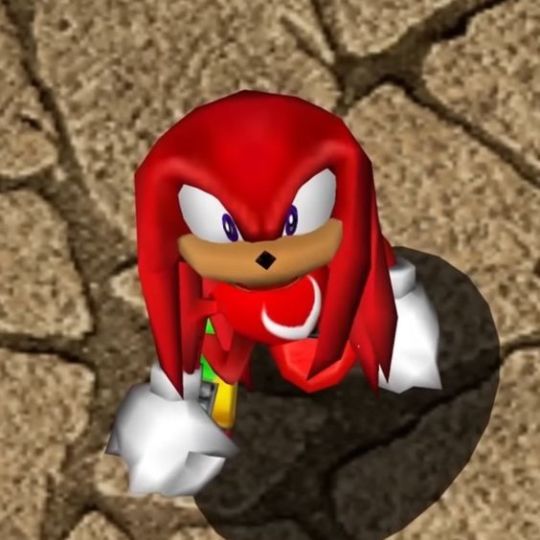



Here he comes, rougher than the rest of them: Knuckles !!
More info under the cut, as per x
Knuckles is a 26 year old from Angel Island. Guardian of the Master Emerald, Knuckles lives relatively isolated from the mainland, rarely leaving the island for anything. He joins the show as a challenge for himself to branch out, live a little and find a potential long-term partner.
To put it simply, Knuckles arrives with a lot to navigate. He's never experienced such a complicated social situation in his life before and he's tasked with learning how to act around the other Islanders, which leads him to be very unfaithful to himself and his personality. Even though he's working out social dilemmas and how to present himself, Knuckles is still a very genuine guy and does nothing if he doesn't mean it. Both laid-back and short-tempered, he finds himself in a bit of trouble on more than one occasion, providing lessons for him going forward.
Trying different faces on, testing the waters and making mistakes, Knuckles needs to learn the value of being his true self and nothing else.
External design choices !! (visual appearance - incl. formation of base sim, references taken, makeup choices, fashion style... etc.)
I only wish I could remember any of the steps I made to create Knuckles' sim. But... By the looks of it, I think I might be able to guess where my head was at with some of the decisions around his design ?? Again, he doesn't look near to what I imagine him to look like, but at the end of the day, as long as they resemble enough of the character we're trying to portray, that's enough for me.
Firstly, I know for sure his SA2 model was used for inspiration and that was a deliberate, memorable choice. Because look at him !! SA2 Knuckles was so distinct to me, not only in how he acted but his features in this game are peak (also why tf is this his only portrayal where he has more melanin ?? huh ??). Needless to say, SA2 Knuckles is a personal favourite of mine in every way, shape and form, and that's basically why I picked that model to base Sim Knuckles off.
Hence why he has a warmer, darker skin tone than what's seen in other Knuckles models. I did my best to match it up as close as possible, and while not exact, it's pretty darn close that I'm no longer so fussy about it.
Knuckles striking red colour went straight to his hair, as per the majority of the sim versions. But, unlike the rest, Knuckles red hair is (allegedly /j) natural. The SLI world has a trend of people dying their hair all kinds of funky colours, but Knuckles isn't one of them, so his hair, brows and body hair are all this shade of red that he inherited from his ancestors (this, among a few other features pull relevance in-plot later). Regrettably, we didn't have anything close to his dreadlocks in-game (one of my FAVOURITE parts of Knuckles' design), so we had to settle for this shoulder-length, half-up-half-down hairstyle. Of course, we try to make up for it by drawing him with them wherever possible, because his dreads are NOT going to be lost on us no matter how limited we are in this game. Another hair related detail that became more of a recent development, is Knuckles having facial hair (not present on his sim, because naturally the game does not have anything close) — you know, just a bit of chin fluff. No reason, just vibes :)
Knuckles doesn't have the same round eyes as what Sonic or Amy have, but isn't so harshly angled like Shadow's, so it was about finding that happy medium with Knux. And you know what ? His eyes are purple, pretty and I can't complain, he's such a cutie <3
I can't say much about his facial structure. I'm going to assume I had a vision, but I don't remember what in the world it was.
Naturally, Knuckles being Knuckles, is definitely more buff than the likes of Sonic or Tails. Bro works out — he's dedicated to that stuff — so that just had to be translated over to his sim. Ain't no more to say about that :)
Another thing absent from his sim version (limitations again, grr) is the idea that Knuckles has cultural tattoos, most prominently the crescent moon on his chest. In some screenshots (not seen here), Knuckles has a tattoo representative of M.E. as well.
As for his fashion style ? Hoo boy. Despite making the occasional, heinous fashion crime, Knuckles is actually pretty styling ! Knuckles suits all sorts of things and his style has a uniqueness none of the other Islanders have. More often than not though, Knuckles is seen in colourful/patterned tees, sweater singlets, cargo pants, baggy jeans and sneakers, along with a chain necklace (and maybe a bracelet and/or ring). Knuckles claims he isn't fashionable, but I beg to differ. He's probably one of the best dressed boys in the villa by far.
Internal design choices !! (personality, characteristics, psychology)
Here's where things get messy. Stated before in previous posts, characterisation isn't strict. All the characters are a blend of a multitude of portrayals across Sonic media and Knuckles is no different. But where each character is a cohesive blend, Knuckles very evidently has two, polar opposite ways of expressing himself, which I've haphazardly labelled:
'Funny-funny, I'm trying to fit in, please like me' Knuckles (that my sister primarily writes for)
And,
'Serious' Knuckles (that I tend to write for)
Like I've said in countless posts before, and in this one, Knuckles is trying to figure out who to be around people. The sillier side of Knuckles is heavily derived from his Sonic Boom characterisation, but is used in a self-aware sense. A lot of fans don't like this caricature version of Knuckles (me included, but I kind of regard Boom! Knuckles as a separate entity at this point and I personally enjoy his character better that way. Also, Boom is really its own continuity anyway, and I enjoyed the show as it was intended. It's another each to their own, I guess), but we've utilised this version of him with intention. AU Knuckles uses this comedic, faux stupidity to make himself interesting to others. This side of him carves a presence in the Villa, and he finds more people are willing to engage with someone entertaining. So the persona sticks.
'Serious' Knuckles is the more true (?) Knuckles. He's the game canon Knuckles, beloved for his steely disposition and golden heart. This is the Knuckles that is both a hothead and cool as a cucumber. He's the one loyal to his duties, to his friends. The one that cares for people, animals, land. He's the guy that could pack a punch if he wanted. Knuckles knows far more than he wants to let on. He's very in tune with people's energy and emotions and a lot of this knowledge makes him quite intelligent, though no one seems to notice.
Despite both these parts of him, Knuckles plays true to his feelings, whatever they may be, and whichever tracks it leads him down. He's not a fake guy at all !! He's just convinced himself what he's doing is the best course of action, even when it may not be.
Overall, Knuckles is a fun character to play around with ! He seems fairly shallow on the surface, but then, digging deeper, there's far more intricacies to his character. Knuckles provides a lot of things to work with in terms of his personality, background, knowledge and actions. I love how his character also explores different things to the other Islanders, due to those aspects.
Fun facts / trivia :
Knuckles loves to sing ! There's many moments throughout the series where he has sung songs alone or with other contestants. Knuckles is trying to make this series a musical (but I won't let him ! /j)
He likes to express his culture and does so wherever and whenever he can. It's very important to him <3
#sonic love island au#sonic love island character bios#sonic the hedgehog#sonic series#sonic#sth#sth au#sonic au#knuckles the echidna#ts3#character bio#character design
4 notes
·
View notes
Text
hc(ish) // character vs game dynamics
The barbarian class in dnd is?? I always feel so confused by it since I have it as Birvor's main class. Mainly because as soon as you load in and the default character is barbarian wearing nomadic looking barbarian furs (like up the Skyrim wilds feel) it gives off the impression that barbarian as a class is actually more like a way of life? Like if you pick it, then your character has to be this wild character living out in the wildness- either in some tribe or maybe they're just a hermit, or a widower that's no longer dealing with society and just kind of lives off the land like a wild animal. (Granted, we have Karlach as a differing sort of barbarian, though her sub class is berserker so it's not quite the same as the 'wild heart' standard variant of the barbarian.)
As far as Birvor goes, I felt compelled to add this in to his backstory in the form of him being born into a nomadic tribe of humans that fit that standard 'barbarian' feel to them, but ever since I got the idea for the character, I always thought of him wearing the fighter-class gear since that's what sort of armor and weapons he'd have been brought up in house Cragdew learning to use. He'd also have a much more polished fighter look (since elves and their fancy equipment) than what the barbarian class offers (at least starting out). So I was very inclined to just have the 'fighter' class for him, with the overall issue being that he needs to rage. Barbarian rages I'm sure have all sorts of different ways to explain what they are and why they happen, and in Birvor's case- he did not have that ability until he was 'seen' by Gruumsh after the orcs that attacked him and the others spilled elf blood. That's of course me going off my own personal spin of rages can happen to orcs/half-orcs in that way regardless of their class.
In which case, having him as a fighter class and still being able to rage thanks to the intervention of Gruumsh makes most sense to me RP wise. Of course in game, I can't do that so- he has his barbarian class on. And another issue would be that his rage with the elk heart angle allows him to stampede/knock things over, which I consider a very canon manner for Birvor's typical fighting style. All in all, I find it a bit strange to refer to him as a 'barbarian' class since even though he was born into a tribe, he was raised within the 'noble' confines of a background, and would have learned the fighting tactics of a fighter class. The only exception to this being that because of his over exerting strength, him using certain 'swordplay' moves would look more barbarous, and he has absolutely bent cheap swords before with how he uses them to basically beat the hell into something.
Bard being attached to him as multi-class is also something odd to me since I can't just refer to him as 'the bard' in passing role-play even though he has the sub class. This is because he's not the standard bard class in that he can't write or compose his own music/tales, he just knows the ones from his education/upbringing because he might have low int/wis, but higher cha and the ability to parrot stuff back as opposed to learn it himself. So yes, he can play 'the power' like any other bard, but it's less of a place of he could hear someone playing it and follow along, but more of a - he's learned it before and had to do it over and over again to make sure he gets the music lesson correct or get whapped over the knuckles with a flute and told to try again. If anything, the most canon part of the bard class for him is not the music, but the fact that he can carry an extra 'weapon' (aka use the lute/whatever instrument he finds as an extra thing to SWING at someone if he drops his main weapon), and of course cutting words/vicious mockery which he would be petty enough to use while badly strumming a lute to make his intended target more annoyed (like a bull fighter waving a red tarp essentially) and eager to target him over his teammates.
#//don't mind me just havin' a brain worm#long post#hc ; // roll history check#//no but the class thing confuses me in terms of rp...but game mechanics-
3 notes
·
View notes
Text
꧁✬◦°⋆⋆°◦. 𝓌ℯℯ𝓀 3 ◦°⋆⋆°◦✬꧂
This week’s lessons were all about exploring the different types of camera shots and understanding why each one matters in visual storytelling. The task was not only educational but also hands on and creative, we got to work in groups and photograph each other using various shot types.
It was exciting to apply what we learned practically adjusting camera angles, framing our subjects, and discovering how each shot can change the feel of a scene. Through this, we gained insight into how directors use shots to shape the viewer’s experience.
ESTABLISHING SHOT:
An establishing shot is a wide or long shot typically placed at the beginning of a scene to introduce the setting. It tells the audience where the action is taking place, whether it’s a cityscape, school building, or forest and often includes time of day. This shot is essential for grounding the viewer and creating context before focusing on characters or events.

EXTREME LONG SHOT:
An extreme long shot captures a vast area, often making the subject appear very small or even insignificant. It’s frequently used in landscapes, battle scenes, or epic film openings to emphasize scale, distance, or isolation. This type of shot can also evoke emotion, like loneliness or awe, and is especially effective in visual storytelling.
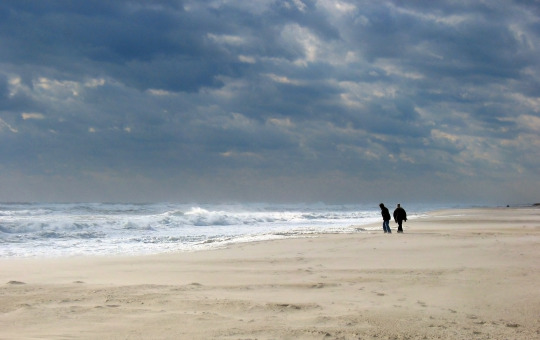
LONG SHOT:
A long shot frames the entire subject from head to toe while still including some of the surrounding environment. It’s useful for observing full body movement, such as walking, running, or dancing, and shows how characters interact with their space. It balances the subject and their setting, often used when the physicality or location matters.

MID LONG SHOT:
A mid long shot typically frames a subject from just above the knees to the top of the head. It’s closer than a long shot but still includes more body language than a medium shot. This shot is commonly used in action scenes, entrances, or moments when both expression and movement are important.
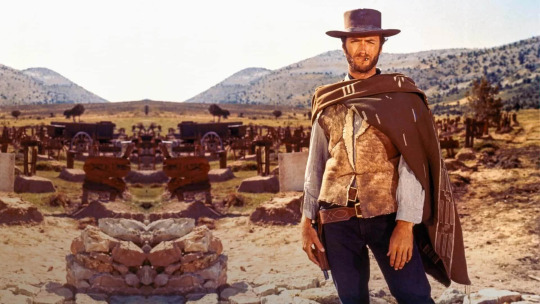
MID SHOT:
A medium shot shows a subject from the waist up. It’s a versatile, natural feeling shot used for conversations or scenes that require both facial expression and limited body language. This is one of the most commonly used shots because it closely reflects how we see people in real life, maintaining realism and relatability.
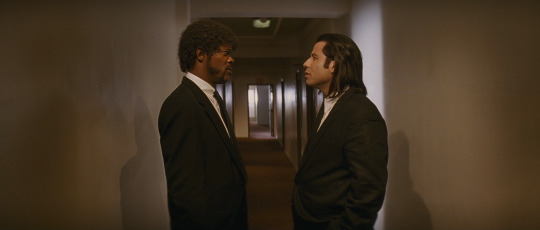
MID CLOSE UP:
A medium close-up frames a subject from the chest or shoulders up. It’s tighter than a medium shot and places greater emphasis on facial expression while still allowing for some body movement. This shot is excellent for intimate conversations, reaction shots, or scenes where emotion plays a central role but full closeness isn’t yet required.
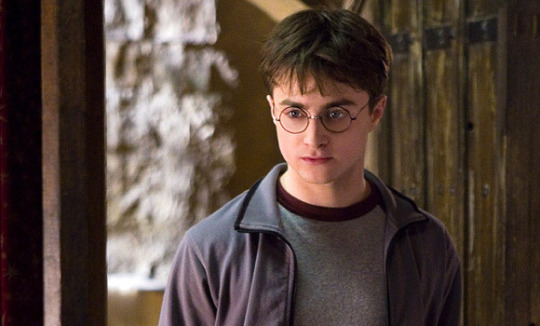
CLOSE UP:
A close-up tightly frames a subject’s face or a specific object to highlight detail and emotion. This type of shot is ideal for showing characters’ internal states, such as sadness, shock, or concentration. It creates a deeper emotional connection with the viewer and draws attention to key elements within the scene.
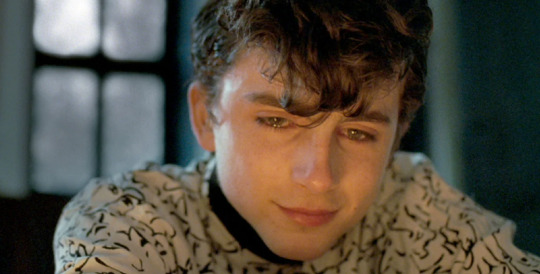
EXTREME CLOSE UP:
An extreme close-up zooms in on a small feature, such as an eye, mouth, or an object like a ring or a ticking clock. It’s used to intensify drama or suspense and is often symbolic or psychological in nature. This shot pushes the viewer to notice something minute but emotionally or narratively significant.
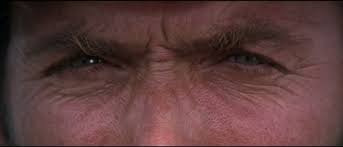
TWO SHOT:
A two-shot features two characters in the same frame, typically used in conversation or relationship building scenes. It helps convey the dynamic between the two, whether they’re close, distant, equal, or in conflict. Framing both subjects together allows their interaction to unfold naturally within a single composition.

THREE SHOT:
A three-shot includes three people in the same frame and is often used in group conversations, interviews, or ensemble scenes. It can show shifting alliances, group tension, or unity. Effective staging and blocking are essential to ensure all characters remain visible and balanced in the frame.
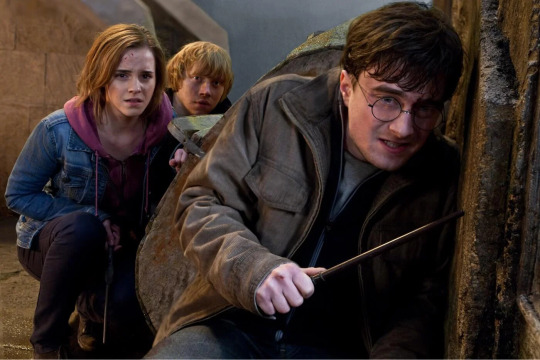
OVER THE SHOULDER SHOT:
An over-the-shoulder shot (OTS) is captured from behind one character’s shoulder, showing what they’re looking at—usually another character. This shot helps establish spatial relationships and is commonly used in dialogue scenes to create a conversational perspective. It also subtly conveys power dynamics depending on framing.
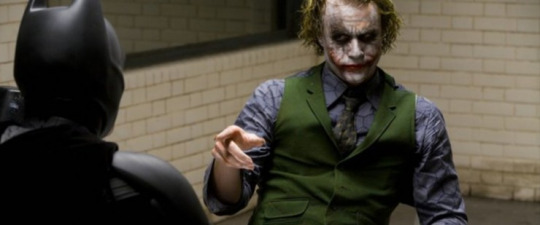
POINT OF VIEW SHOT:
A point-of-view shot (POV) shows exactly what a character sees, placing the camera in their literal position. It immerses the audience into the character’s experience, making them feel part of the action or emotion. POV shots are often used in horror, action, or psychological scenes to evoke empathy, suspense, or discomfort.
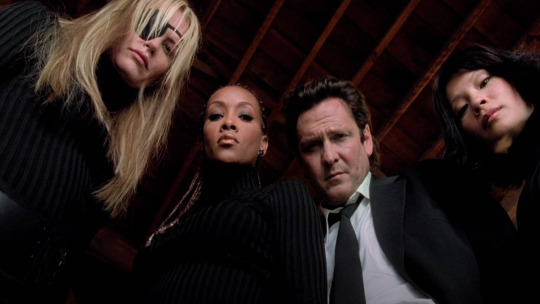
0 notes
Note
Hi, I'm a reader. I finished reading the message.
The part about Siete setting up emotional boundaries for himself really struck me—it's a perspective I hadn't considered before. If we think about it from that angle, it's possible that, as a force meant to suppress potential threats to the world, Siete feels he has to make fair, impartial decisions without letting personal emotions influence him—even when it involves those closest to him.
But precisely because of that, Most of the time, he solves problems on his own.. So when he meets someone like Djeeta who shares the same destiny and yet continues to walk her path with unwavering faith, even knowing the risks—she becomes like a"light"that illuminates the"star"that is him. He finds himself drawn to her in a way he can’t pull away from.
This reminds me of what Id said to Siete in Relink: "I've never seen the Djeeta complain anyone, nor have I ever seen the Djeeta strike a companion... Perhaps, to the Djeeta, you aren't a companion, but more like family, someone he doesn't need to hold any reservations with.” I think Djeeta, as the Singularity, probably sees Siete as someone closest to her too.
In Granblue Fantasy 2024 Fes. Orologia says to Sieten't: “Everything is just as you said. I've never once thought of forgetting our sins. But this world now is one that all living beings believe in hope, and it was earned through countless choices. That strength to believe in the future, to fight against fate, and the will to protect what matters—please, don't erase all that with despair. Even you —” But Sieten't replies: “Boring. You're so arrogant, Time Dragon. Thinking hope is inherently better than despair.”
Even if Sieten't has already lost his humanity, I believe that to him, the Djeeta still appears"bright and warm." Link: https://x.com/TARO_KOBAYASHI/status/1871132782052946031/photo/1
Also, One other interesting detail is that Siete calls Orologia by name, while Sieten't refers to them as 'Time Dragon.' Even the way he addresses the Djeeta is different.
Welcome back!
I think it's there in a lot of things he does. He desperately wants to be close to people, but he doesn't quite dare to emotionally open up to them, so the best he can do is request everyone rely on him, since that's easier on him while still making him feel needed.
I do think he's just scared of being vulnerable with people, but it's definitely also an attempt to remain neutral, so he can pass impartial judgement, as protector of the world and all that. The man loves putting the whole weight of the world on his shoulders, after all.
He even gets frequently reprimanded for trying to do things on his own and not involving the others, like when he got Seox injured during Seeds of Redemption in order for his convoluted plan to work out, that whole Id-thing in Relink or when he thought he could just suppress the Seven-Star Sword on his own, until it took over and made him hurt his friends. That's also why I think the whole thing with the other Seofon is fascinating, because it's built up as this tragedy, a tale of hubris and pride before the fall. Is the threat that the other Seofon poses enough to finally make him open up and let other people in? Is he going to learn his lesson at last?
...That wasn't the question.
she becomes like a"light"that illuminates the"star"that is him.
That's such a lovely sentiment. He's definitely grown attached to her and I do think it's a testament to his character growth that he unquestioningly relies on her, despite his previously mentioned attachment issues. May they shine brightly together.
I think Djeeta, as the Singularity, probably sees Siete as someone closest to her too.
I want to imagine that she sees him as a kindred spirit and someone with a similar fate. They're both chosen by powers beyond their understanding, but at least in that, they have each other. They both feel a great deal of responsibility towards the world, so it's nice that they have someone to shoulder the burden alongside them.
“Boring. You're so arrogant, Time Dragon. Thinking hope is inherently better than despair.”
That's such a banger of a line though. Even if it's sad to imagine him genuinely thinking that way.
Considering Djeeta managed to sway Sandalphon to her side, and indeed, brought a lot of crewmates back from the brink, she would seem as a bright light to even someone as lost as Sieten't. She has such a magnetic personality and effortlessly befriends even the most questionable of people, I could see her trying to extend a hand in friendship even to Sieten't. Whether he would accept that, or even try to cut her down out of fear that he might want to accept it against his purpose and better judgement, we can only speculate.
I also find it interesting. To Seofon, Djeeta is his Danchou-chan, while Sieten't reduces her to to her role as the Singularity. I think Seofon called Orologia Orologia-chan, even, while again, Sieten't reduces them to their role. I think it shows the lack of attachment and the disinterest in them as people. They are these things in these functions and that's all that matters to him.
#I haven't gotten around to much of the Granfes show much less understanding it#so that was really useful#thank you!#asks#anonymous
0 notes
Text
I've been thinking for a while now to start writing reviews about books I've read, including more information about the TWs, rating, etc. I hope it would help people find books/decide whether they want to read something or not. If people find it interesting, I might make a separate blog for it but for now, here's the first one!
Title: Malum Discordiae
Author: Ashlyn Drewek
Summary: After Cassius Corbin’s mother was murdered by fellow witches, he learned an invaluable lesson: death comes for us all—even Necromancers. Six years later, enrolling at Tennebrose University with vengeance on his mind, the last thing he expects is to come face to face with Graeme Hewitt, the son of his mother’s killer. As much as Cassius tries to avoid the naive weather witch, fate has other plans.
In spite of their families’ ongoing feud, they’re forced to work together if they have any hope of passing their required class. But as late nights and stolen moments turn to something more, a rash of demonic murders plagues the university. If they don’t get to the bottom of it, they could both be next.
Genres: Fantasy, MM
Year of publishment: 2023
Series/Standalone: Series
Name of Series: The Tennebrose Series; Book #1.
Relation to the rest of the series: Could be read as a stand-alone.
Rating: Explicit
TWs: animal cruelty; alcohol/drug abuse; death of children; murder; suicide; dubious consent
Others: Enemies to lovers; Dark Academia; Witchcraft; Modern; Necromancy
Goodreads rating: 4.1/5 ⭐
My rating: 9.5/10
In-depth review:
Malum Discordiae was a very random finding which did not disappoint, and I ended up reading almost in one sitting. It involves magic, rivalry, mystery and a number of plot-twists, some of which easier to predict than others. However, even the ones I had a *feeling* about, resolved in an unexpected turn of events that didn't take away the joy of the reading process.
The story involves some of my favourite topics, which include fantasy, magic, and dark romance. However, all of this is combined with a modern setting, which could have taken some of the appeal, but instead it made the story all the more interesting as it was smartly written in.
The characters are interesting and while one of my only black marks comes from the fact that there aren't too fleshed-out, especially when it comes to the secondary characters, we get to know more and more about everyone and their motives and it only adds to the whole atmosphere and the final resolutions of the book.
The POV switches between the two main characters, Cassius and Greame, almost every chapter, which gives the opportunity to see the story from different angles, and keep up with different plot lines, and adds to the overall mystery and discoveries by showing how not everything is as it initially seems. While I'm not a fan of the first person POV most of the time, I would say it works good in this case. It perhaps adds to the lack of characterisations but then again, we get to see the here-and-now, rather than have very lengthy (and oftentimes a bit boring) explanations about who-is-who, how they came to be, and what their relationship to the rest of the characters is. These things get explained in the process of the story itself, and through conversations with other people, which is more than enough.
When it comes to the fact that the story is part of series, I would say it can be read as a standalone. I checked the other books and while they are in the same setting, for now Cassius and Greame's story is complete, and they appear only briefly.
Without saying anything more about the story in order to preserve it as spoiler-free as possible, I would conclude this review by saying I highly recommend the reading to anyone who is interested in the genre, and the premise of the book.
However, be mindful of the rating and the TWs! It is a story that involves mature themes. I would put a brief commentary on these things, to give more insight.
TWs and rating: The story is rated 'explicit' for a reason. There are lots of descriptions of sexual content, violence, and gore. It is definitely for mature audience.
However, I would say that for fans of Dark Academia, it is still pretty mild. There are mostly mentions of murder and violence, and while there are some disturbing descriptions, it isn't every page. Still, death is a topic that haunts the better part of the book, so be mindful about that. We hear about it, and we see it. And last but not least, as the summary suggests, some of it includes close family members.
For the sexual content, it is very much explicit, and it starts from chapter 1 (for reasons). If you're not fans of smut (as myself), I would say it is easy to determine where such a scene is about to start and skip it, they aren't too necessary for the plot so it's possible to skim through or even completely skip. However, there are still discussions, comments, and thoughts involving sex in the story. But everyone involved is a legal adult.
Regarding the dub-con warning that might disturbe some people, I would say it comes pretty much from the enemies to lovers element of the story. All sexual acts are completely consent and the participants are equally involved and into whatever is going on. The dubious part comes from the mutual realisation it is not a good idea (enemies, duh), rather than lack of desire to take part in it.
However! This is all my personal opinion and commentary on the TWs! I'm doing it so people can be more prepared what to expect, and the TWs shouldn't be ignored, or dismissed!
And with this, I officially end the spoiler-free review of Malum Discordiae. My final mark would be 9.5/10, as I loved the story, and there were only a few minor things that stop me from making it a full 10/10. I might consider making a more detailed and not-so-spoiler-free review, in case anyone shows any interest.
#book#book recommendations#book recs#book review#mm romance#lgbtq books#fantasy#fantasy books#magic#witches#necromancy#nature witch#demons#dark academia#enemies to lovers#malum discordiae#the tennebrose series#dark romance
2 notes
·
View notes
Text
Directed Study [Chemigrams]
Instead of watching a show we instead learnt about Chemigrams. They're a type of artwork created using an old photography method. I made three outcomes of varying qualities.
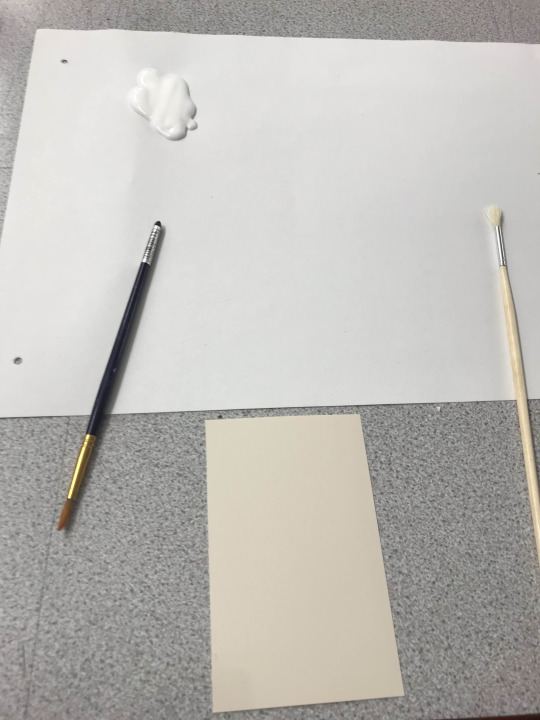
I started with some photographic paper and some hand cream, as well as some paintbrushes.
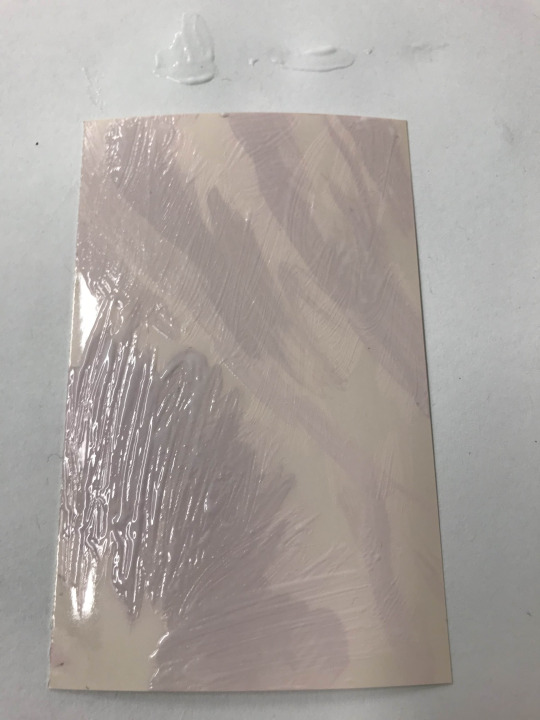
I then started to paint. I didn't have any characters in mind I wanted to draw, so I made it look very abstract. I didn't take a finished result photo of it white, but I think it looks alright.
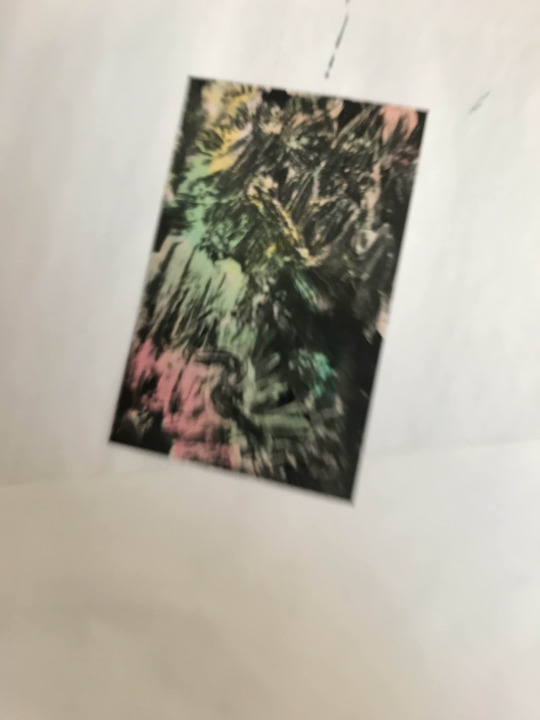
Here I had painted it, although my phone didn't like me moving so it looks like it's running away from me. I used red, green, orange, yellow and blue to paint and I think it is a good result.
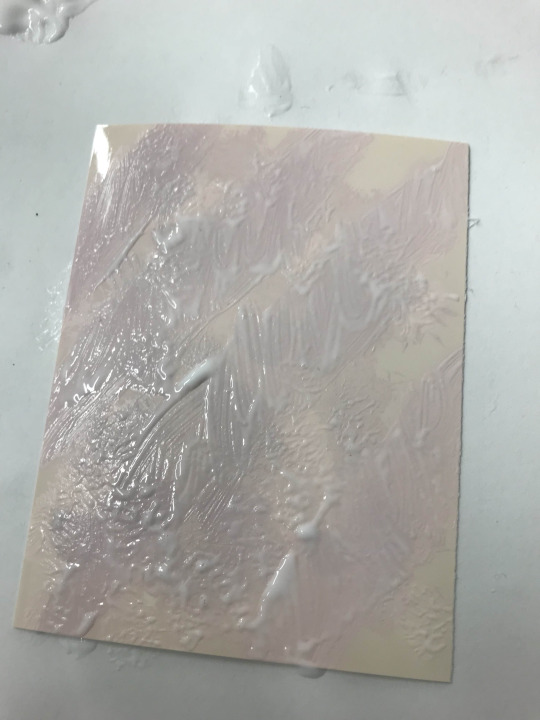
I used the same hand cream a second time, once again trying to make it abstract. I tried to make inconsistant patterns but still keep my 'paint' strong so it showed up well later on.

Here is the finished result. I think this one is the most promising out of both my outcomes. I like how it has many different angles invilved and brush strokes so it can look like many different things at once, like mountains or a human figure.
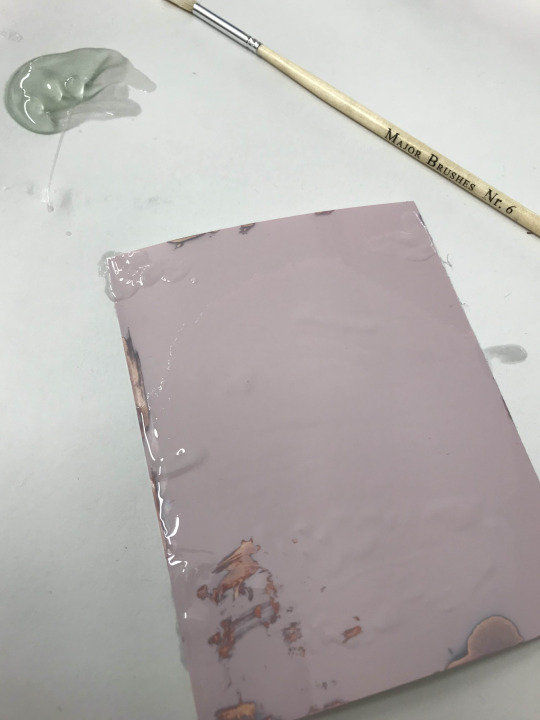
I did try to 'paint' with hand gel to experiment, but alas this experiment failed. It barely showed up on the paper, and once I had dried it, it was basically empty.
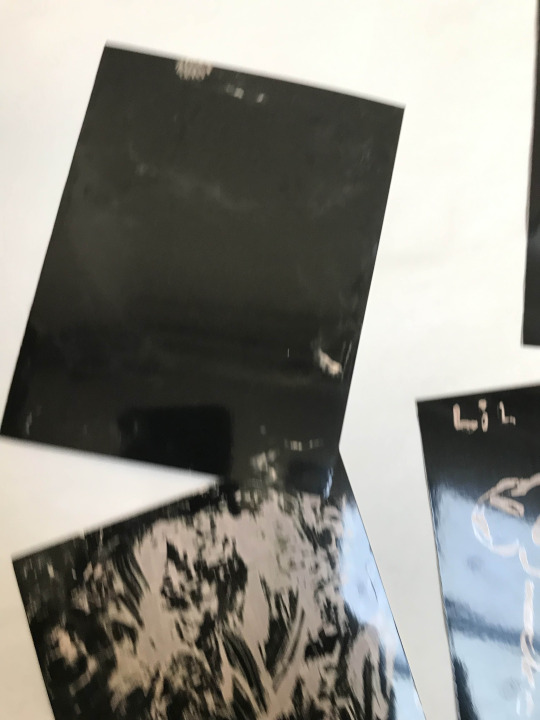
But not every experiment succeeds, so it's good to learn.
This was an enjoyable lesson as it was quite hands on and I found it really satisfying how the paper turned black and showed the finished result.
0 notes
Text
Baymax Modelling - Class Exercise
I was set the task of modelling Baymax from Big Hero 6 as both a reintroduction to Maya and as a means to practise character modelling which until now I had not attempted.
The video above shows the final product from this modelling exercise, despite the long hours that it took to get it finished in a day, I learned a lot throughout the process in which I have gained a much better understanding of how to approach modelling in Maya for rounded characters. Before this I had only modelled furniture and architecture and this was a refreshing change.
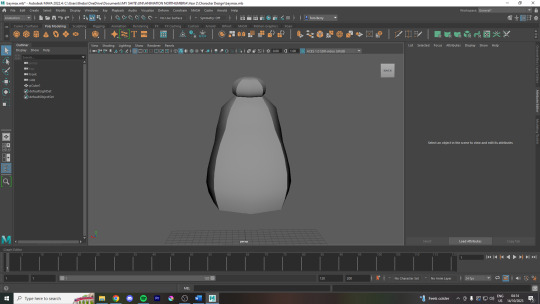
By the end of the session in class I managed to block out the general shape of the body and refrained from smoothing and adding more polygons until it was necessary. It took a few attempts to get to this stage because I didn't yet know that when creating a rounded character you need to begin by rounding off a simple cube and build from that basic shape. I pressed on without realising this until after blocking out the shape from the side and the front at which point my character was looking very blocky and square which took longer to sort out than if I had started with this rounded cube.
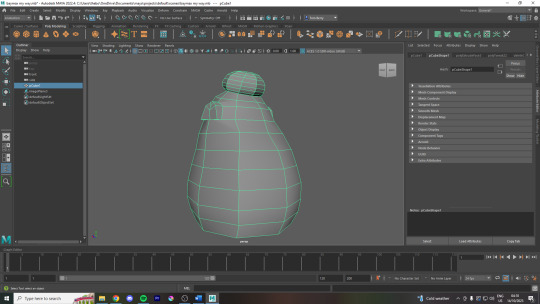
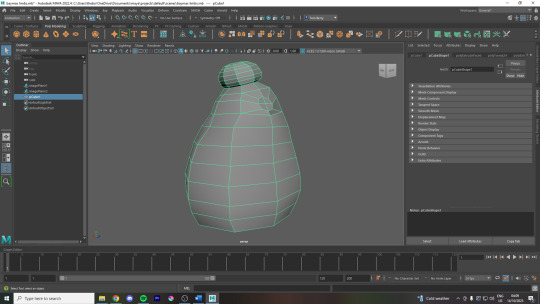
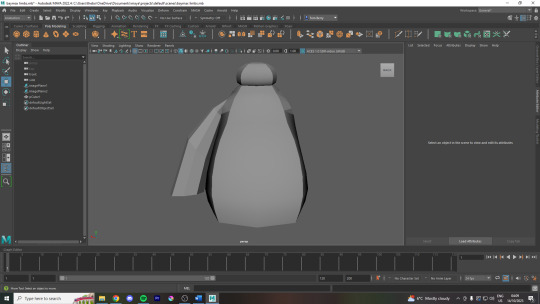
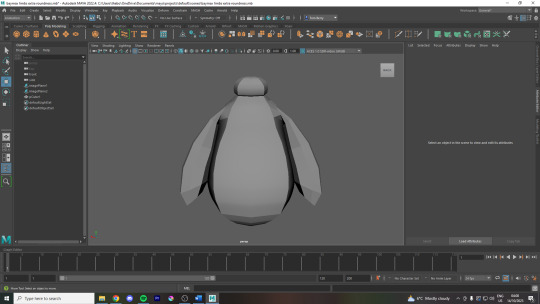
When making the arms I tried out a couple different things before I found Gary's tutorial which helped me with the organisation of polygons before extrusion. Initially I planned on extruding the shoulder shape however, just like before, it was best to extrude a rounded four quadrant shape first to block out the initial shapes.
youtube
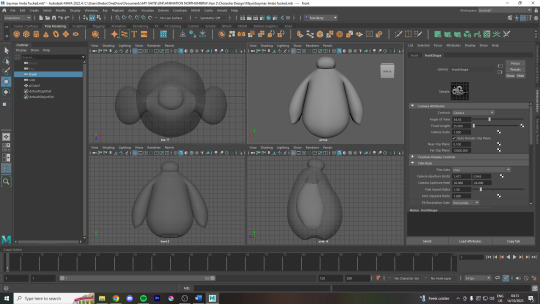
As Gary's tutorial video doesn't walk you through the legs and hands of the model I had to improvise with what I'd learnt so far to finish off the rest. The video and the lesson got me to the stage above.

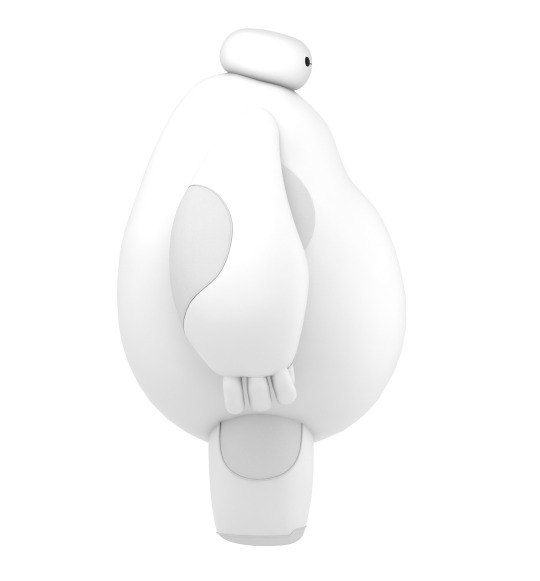
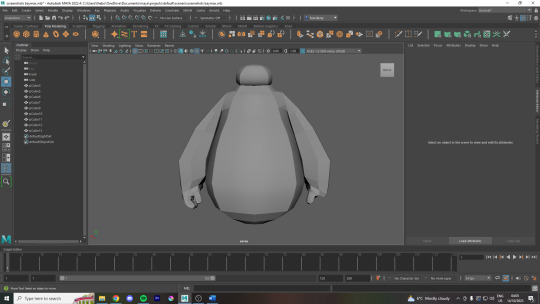
I attempted to use the same rounding process for the hands until I managed to get something which somewhat matched the image planes. I did find some difficulty at this point because although the two images provided to import into Maya are very similar, there are a few differences in positioning especially with the head shape and the hands. These minor discrepancies made things harder to figure out and in some places on my final model it is in between these two poses, especially in the length and angle of the fingers.
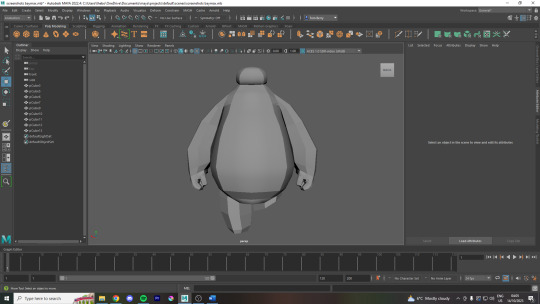
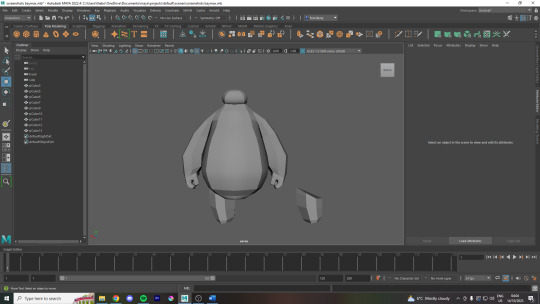
youtube
I realised at this stage that to save time, I could simply duplicate the model, delete everything other than the hand, mirror this model and reattach it using the Merge Vertices tool. I did the same thing for the legs and although this process wasn't perfect, the slight inaccuracies were negligible and it was a huge time saver. I used the video above to find a quick means of mirroring the hand so that the thumbs and fingers would be arranged properly.
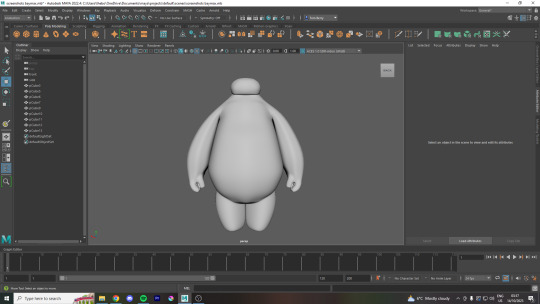
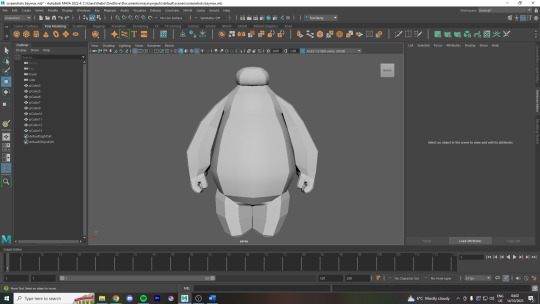
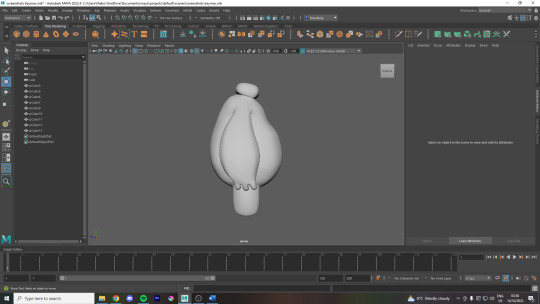
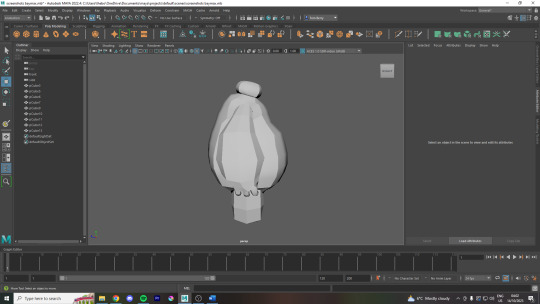

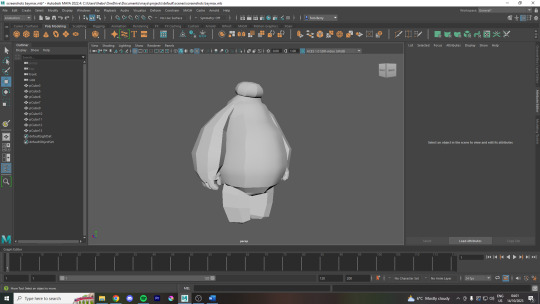
Here are the screenshots of the final model, its turned out pretty well, if I was doing it again now I would spend more time on the hands now that I know that mirroring difficult parts is the way to go. I think the topology of the model, in the video at the top, was really good for the most part as I now know that you want evenly spaced squares across the entire model without any triangles present. The main area I would have to change the topology would be the arms as I did not cut it into enough segments to make it nice and square but other than that I think it worked well.
youtube
I did also make an attempt at painting the eyes onto the model by following this tutorial and although I could draw on the belly, every time I painted the head, it would paint entire segments of the head so I could either colour it entirely black or nothing at all. I'll have to figure this out at some point as I tried to delete the history of the shape and fiddled around for twenty minutes trying out different things but I had to leave it blank.
As a side note, here are some of the hotkeys that I memorised during this process:
'1' and '3' to switch between standard view and rounded view
'Shift' + Hold 'Right Click' to pull up the modelling menu -> Go down to 'Circularise Components' to instantly round a selected area
Go to that same menu and click on 'Mirror' to reflect a selected area
This could be wrong as I couldn't get the paint tool to work on all parts of the model -> rendering -> 3D paint tool icon -> select your model -> double click on the paint brush tool to bring up settings -> scroll down to file textures -> assign/edit textures -> turn the size up to 2048 -> press assign/edit textures and then you should be able to paint
0 notes
Text
So, uh, warning in advance: This most definitely does contain violence. Mentions of broken bones, and killing someone (not in HUGE detail, but some), etc, do appear. This has been a passion project of mine for almost 3+ years now. I’ve been itching to get it out into the world and share it with others.
Context: Tiberius is our antagonist here, and Kai is our protagonist. Tiberius is a newly introduced character here, but this particular scene is about midway through a conflict between him and Kai. Kai and Tiberius are technically the same person, just from alternate universes. The Darkness that Kai mentions here was the previous BBEG (Big Bad Evil Guy), and Kai killed it in order to save the rest of his alternate selves. Kai and Tiberius are not the original version of themselves, however. That would be Zachary Pines, of whom is dead by this point. Kai is samurai from a Japan who managed to keep the samurai tradition alive well into the modern era. He has knowledge of ancient fighting styles and techniques that allow him to incorporate certain elements into his blade work. Tiberius has the ability to mimic whatever material he is currently touching. I would go into more depth about these characters, but then there’d be no need for you to read my work, now would there? Instead I’ll save that if this goes successfully and people actually see this.
Hopefully @writeblrsupport sees this and I get to share this! Thank you so much!
Like I said, there is mention and description of violence and death, so if any of that is triggering or disturbing to you, I suggest you stop here.
I was battered and bruised, beaten to no end. Yet I persevered, with my astutachin katana in my left hand. Two of the fingers on my right hand had been broken, making it hard for my right hand to stably grip the tsuka. My attempts to mix different stances and breathing styles had been unsuccessful so far. Tiberius smiled thinly.
“Struggling there? It’s only understandable, I’ve surpassed even the original Zachary at this point. There’s nothing you can do, that I can’t do better. Not only that, your rudimentary control of the elements is actually kind of pathetic, I don’t see the point in using it. This situation is perfect to demonstrate how useless it is, you’re struggling to overcome me.” Tiberius ranted. His ego was so inflated, all he could do was praise himself and gloat about his own success. As arrogant as he was, nothing irked me as much as his derogatory statement about Zachary. He had died to buy us all time and safety from the Darkness, and clearly Tiberius had no idea how kind and precious it was for all of us. I gripped my tsuka angrily, using all my discipline to keep my mouth shut. He watched my expression with amusement.
“Oh you don’t approve? Well, I don’t think you’re in a position to judge me right now.” He said, as he gestured to my broken fingers. That’s when I snapped. I felt the chilling sensation along my spine, the prelude to the blazing heat that always followed, and I welcomed it with open arms. Just like the first time, heat flooded my arms and enveloped my katana. Tiberius gave me a wide, grim smile.
“Yes! YES! There it is! There’s the Kai I’m looking for, c’mon BRING IT!” He shouted, sounding like a lunatic. I rushed forward, keeping my blade raised and angled to the side. Gripping his steel bearing in his left hand, he raised his right hand to crush my katana as his arm became steel. But I had learned my lesson from the Darkness already. Given my rough knowledge of Sun stance, my fire was currently burning at around 1,500 degrees fahrenheit. The highest temperature of intense heat steel could handle before melting without question was 2,800 degrees fahrenheit. That was almost two times my current output, which was already incredibly intensive on my body. I only had to intensify my heat for as long as it took to run through his arm though, so I mentally probed inside myself, searching for the source of the heat. Clearly it was originating from somewhere near my spine, but where? Finally, I found it, my heart was pumping out heat like a fountain pumps water. I envisioned my heart like a furnace, and pictured shoveling trainloads of coal into it. My mental depiction somehow worked and I felt the overwhelming wave of heat trying to wash over me. Unsure what would happen if I left it unchecked, I quickly directed it outside of my body, wreathing my arms and katana in flames. My mental process sounds long, but in reality, Tiberius’ arm and my blade hadn’t even touched yet. Tiberius barely noticed the change in heat, and plowed onwards, clenching his fist victoriously. I could feel his fingers wrap around my blade, but I pushed forward, feeling my katana slice through his arm like a warm knife through butter. Now he noticed something was wrong, and his expression changed to one of horror as I cut the bottom half of his right arm off.
“FUUUU-” He didn’t get to finish his curse as the flames engulfed his body and he scrambled away from me. Tiberius tried to roll and put out the fire on his molten steel body, but the heat was too intense. Desperate, he plunged himself into a small puddle of water, and released his steel ball bearing. He momentarily melted into the puddle as water, then reformed as himself, covered in burns. He patted around in panic, he had dropped his bearing and now had no idea as to where it had ended up. Something hit my foot as I walked towards him slowly. The small bearing skittered away, making ripples in its wake. We locked eyes, knowing we were going to fight over that bearing. I wasted no time in switching up my breathing, pressing my tongue against the roof of my mouth and breathing out through my clenched teeth. Instead of focusing on the muscles in my legs, I drew the static energy in the air and directed it into my blade. Tiberius lunged for the bearing just as I flipped my katana downwards and impaled his hand. I leapt backwards and released the energy in my katana just as my feet left the puddle. A spherical web of electricity burst outwards, electrocuting Tiberius. He screamed out in pain, pinned in place by my blade. As the electrical energy dissipated, I lunged forward, grasping the tsuka and yanking upwards. I kicked away the red-hot bearing, sizzling as it evaporated the water around it. I aimed my katana at his throat, no words were needed, my intention was clear. Stop struggling, or I cut your throat. His eyes focused on my blade, dilating as they struggled to focus. He stared at it for a long moment, as if it was something he hadn’t entirely noticed until now. He reached out and pulled it closer to his neck, daring me. Then he stared at his hand, and smiled. I understood too late, trying to pull back, but he had already wrapped his hand around my blade completely, using it for its metal. I lunged backwards, but the damage was already done. Every astutachin blade’s color was unique, transmuting into different colors depending on the owner of the blade. Tiberius’ visible skin had become astutachin, and I watched as a wave of pitch black pigmentation washed over him. As black as the abyss, just like his heart.
“I must thank you, this metal is fantastic! Do you know where I might be able to find some, mayhaps?” Tiberius asked in a mocking tone. In that moment, I didn’t let myself think, because I knew if I did, my own righteous fury would cloud my judgment, rather than act as a honed blade for my own use. I felt the fountain of heat within me swell up at my emotion, and I let it loose. My katana became wreathed in flames once more, but I was determined to end Tiberius right here, then and there. I imagined the truckloads of coal from before, but exponentially more this time. The sweltering heat made the air surrounding me hazy like a desert mirage. Tiberius simply assumed a brawler’s stance with a haughty grin. I drew my breath in slowly, bringing my blade close to my cheek, holding it horizontally. In a flash, I thrust my blade forward, aiming for a singular point, his heart. His eyes widened with surprise and he barely smacked my katana away with the flat of his palm. Unrelenting, I threw my katana upwards, giving it plenty of height and time before it reached me again. I changed my breathing again as I maneuvered behind and around Tiberius, locking him in a choke hold. Now was my chance. I focused on channeling every lick of fire pouring out from my heart to my hands as Tiberius struggled against my grip. My senses were at their peak right now, so I was more than aware of the whistling of my katana as it plummeted towards me. Simply the heat from just me wasn’t enough to melt through him, damaging though it was. I released Tiberius and planted a foot on his back to kick him away. I retracted my foot and kicked outwards just in time to nudge the tip of my blade outwards, rotating the tsuka in my direction. I quickly caught the tsuka and adjusted my grip just as Tiberius finally regained his balance and turned around with fury in his eyes. I held my katana low, pointed at the ground. With a moment’s rest, I lunged forward, bringing my katana up in a long stroke upwards. I pressed onwards, slicing downwards with my blade in the same stroke, then up again. I was like a waterfall, pounding away at his defenses. Shallow slices in his forearms and chest deepened as I continued to batter his defensive stance. Suddenly, he dropped his forearms and clapped his hands flat around my blade, stopping it in its tracks. I leaned forward, putting all my weight against his hands. In response, he leaned backwards, trying to distribute the force evenly. I clenched my right hand into a fist as much as I could and put it against the higher end of my katana, pressing downwards. The extra weight made him stagger a bit, but he grit his teeth and held his ground. Knowing my katana would be destroyed by the end of this, I let the fire flare up once more, consuming us both. Tiberius clenched his mouth shut, cutting a scream of pain short as he fought to push me backwards. Both my katana and his skin began to glow, first glowing a bright red, then a blazingly brilliant white. He tried to let go, but a look of horror dawned on him as he realized that his hands had fused to the blade, leaving him unable to let go of the metal and escape. I maneuvered the blade upwards, aiming for his heart once more. Tiberius struggled to divert my katana but his hands were helpless and only served to guide my blade. I plunged my katana downwards into his chest. He let loose a scream of agony as the blade sizzled and sunk deeper into his heart. His hands had melted into nothing, leaving his arms dripping molten metal. I gave the tsuka one final twist, and severed his aorta. With that, his body finally went limp, and the life left his eyes.
1 note
·
View note